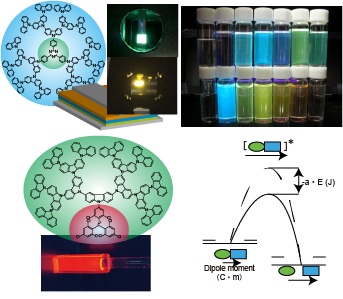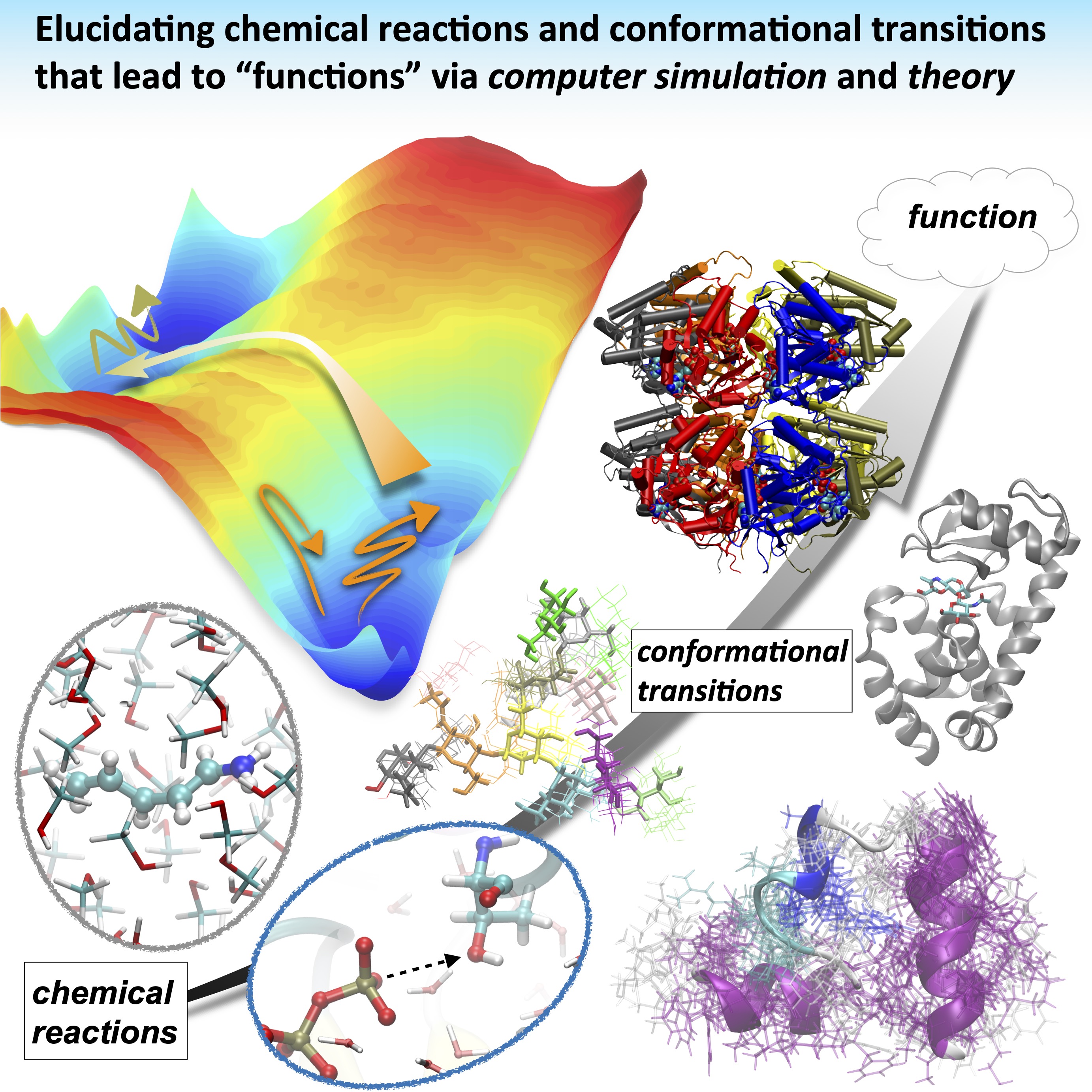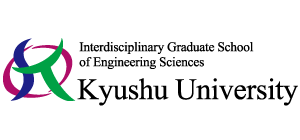検索キーワード:Chemistry
[Category Ⅰ] Biomolecular function chemistry
Chemistry and Materials Science
Associate Professor Asako Murata,
Labo Site
We are working at the interface of chemistry and biology, exploring small molecules that can bind to nucleic acids (DNAs and RNAs) and modulate their functions. Most of the human genome is transcribed into RNAs, however, only a small portion of them is translated to proteins. These non-protein-coding RNAs (non-coding RNAs, ncRNAs) are thought to have diverse roles in cellular processes, so they are emerging targets for drug development. In response to the increasing interest in the ncRNA-related topics, small molecules targeting ncRNAs have attracted considerable attention from researchers in various research fields, including chemistry, chemical biology, biotechnology, and medicine, because of their potential application in modulating the function of ncRNAs. Our main research fucuses are:
● Exploring/development of small molecules that bind to a specific RNA and application of small molecules to modulate the RNA-related biochemical reactions in cells
● Development of a method to screen and identify RNA motifs for small-molecule binding
● Analysis of the interaction between RNA-small molecule
[Category Ⅰ] Quntum Chemistry
Chemistry and Materials Science
Professor Yuriko Aoki,
Labo Site
We are creating an efficient calculation method to elucidate materials at atomic and molecular levels by quantum chemistry based on the molecular orbital (MO) method, as well as designing new functional materials and analyzing catalytic reactions. In particular, we are aiming to design functional properties using supercomputers by analyzing the electronic states of nanotubes, surface, and biopolymers like DNA/RNA/Proteins using proprietary highly accurate method. There, to elucidate the principles of physical properties and reactions, our unique orbital interaction analysis method is also incorporated. Along with the construction of novel methods that contribute to pre-/reverse- synthesis design such as magnetism, conductivity, optics and battery characteristics, machine learning using neural networks and novel multi-scale methods using dynamics are also being developed.
● Development of accurate and fast quantum chemistry calculation method -Elongation method- and DNA/RNA data science
● Structural / characteristic analysis of solid surface, homogeneous / non-homogeneous / biological-catalytic reactions
● Theoretical analysis and design of ferromagnetism, conductivity, nonlinear optics, battery materials, etc.
● Development and application of orbital interaction analysis for functional elucidation-Through Space / Bond analysis method
● Computational chemistry related to CO2 adsorption and polymer degradation prevention that contribute to environmental problems
[Category Ⅰ] molecular spectroscopy
Chemistry and Materials Science
Professor Akira HARATA , Associate Professor Akihiro YABUSHITA , Assistant Professor Toshio ISHIOKA,
Labo Site
New analytical methods are essential for frontier sciences. Our laboratory develops new measurement methods for studying the structure, reaction, and function of molecules, and keeping in mind the application to solve various social problems related to materials science, the purpose is to be involved in the elucidation of current difficulties that are interesting in basic science. In particular, we have pioneered new spectroscopic measurement methods for molecules using laser and synchrotron radiation, and are expanding their applications from basic analytical chemistry and physical chemistry to environmental chemistry, biochemistry, and astrochemistry. This laboratory is an internship-compatible laboratory for technical college collaborative education programs. For applications and questions, please contact us from the bookmark list or the laboratory online interview form after bookmarking.
●Development of ultra-sensitive and high-precision measurement methods using "heat, ions, fluorescence, harmonics" generated by irradiation with laser or synchrotron radiation
●Development of molecular analysis methods using molecularly imprinted electrode
●Elucidation of molecular behavior in micro / extreme environments such as water and ice surface, and various scientific phenomena in vivo / environment
[Category Ⅰ] Photo-and Electro-Functional Chemistry
Chemistry and Materials Science
Assoc. Prof. Ken Albrecht,
Labo Site

This laboratory is developing new semiconductors and light-emitting materials based on organic chemistry, photochemistry, and electrochemistry. We are also developing novel reactions catalyzed by "electric fields". Our luminescent materials are mostly based on dendrimer structures that exhibit thermally activated delayed fluorescence (TADF) and luminescence from the doublet states (radicals). The developed materials are applied to light-emitting devices such as organic light-emitting diodes (OLEDs) through solution processes such as printing, and their stimuli-responsive properties are also investigated. As for new catalytic reactions, we are developing reactions in which a strong electric field is applied to organic molecules using an electric double layer or nanogap electrode. The laboratory conducts several domestic and international collaborative research projects and has sent many students abroad.
●Development of dendrimer based organic luminescent materials and application in organic light emitting devices.
●Development of external electric field catalyzed organic reactions.
[Category Ⅰ] Chemistry and Physics of Functional Materials
Science and Engineering of Materials and Devices
Professor Michitaka Ohtaki , Associate Professor Suekuni Koichiro,
Labo Site
This laboratory was established in 2013 focusing on development of energy-oriented novel functional materials based on inorganic materials science, physical and solid state chemistry, and condensed matter physics. It also aims at more comprehensive targets in materials science by combining a wide variety of the properties of inorganic materials and an extensive tunability of organic molecules. The most distinguished achievement of our lab is a pioneering work on oxide and sulfide thermoelectric materials resulting in our continuing accomplishments on the best performances of both n- and p-type bulk thermoelectric oxides. Our perspective, however, is not limited to the thermoelectric materials, but extends to unconventional approaches in materials chemistry and physics for next-generation materials including low-dimensional quantum-confined inorganic nanomaterials spontaneously formed in the presence of self-assembly molecular templates exploiting organic surfactant molecules.
●Oxide- and sulfide-based thermoelectric materials with novel crystal structures, chemical compositions, and nanostructures
●Selectively enhanced phonon scattering by nano-inclusions and nano-heterointerfaces
●Novel material processing for oxide/non-oxide nanocomposite ceramics
●Anomalous solid solubility expansion and its application to unconventional intensive doping by multi-element co-doping
●Layered, caged, and rattling crystal structures and their thermal and electronic properties
●Low-dimensional inorganic nanomaterials spontaneously formed by organic molecular assembly templates and their peculiar quantum properties
[Category Ⅰ] Theory of Functional Mateirals
Science and Engineering of Materials and Devices
Prof. Kengo Shimanoe , Associate Prof . Ken Watanabe , Assistant Prof. Koichi Suematsu,
Labo Site
Development will be expected more and more assuming that the key to new science and technology construction is gripped as for various devices (elemenet) taat use functional materials in the future. As for physical properties of functional materials. it depends on not only the buk but also the structure and the organization. etc. on the surface and he deld sce, and the control and the optimization of cose varbus factors are onemos: moerant for the device comburecon nins caring area as as the creation of the followme new or lead ancion devices, examines within the wide range omene design and re synthesis of new functional materials to the analysis of ue structure etc., the device constructor and evaluation of characteristics and the research is developed.
Gas sensor、All-solid-state battery, Oxygen permeable membrane, Functional materials, Nano, wet processing, Ion conductor, Mixed conductor, Semiconductor, Metal oxide
[Category II] Computational Molecular Science
Chemistry and Materials Science
Assoc. Prof. Toshifumi Mori,
Labo Site

We develop and apply computational approaches based on theoretical and computational chemistry and computational science to elucidate the mechanisms of condensed phase chemical reactions and structures & functions of (bio)molecules. In particular, we work on molecular simulations which offer atomistic insights into the complex behavior of molecules in solution. By utilizing these computational approaches, we aim at understanding and modifying the functions of polymers and biomolecules.
・Development of molecular theories for chemical reaction dynamics in condensed phase
・Molecular simulation of biomolecules to elucidate the mechanism behind functions
・Theoretical studies on conformational dynamics of proteins
・Theoretical studies on reaction mechanisms of organic catalysts and enzymes
[Category Ⅰ] Functional Inorganic Materials Chemistry
Chemistry and Materials Science
Professor Hisahiro Einaga , Associate Professor Hajime Hojo,
Labo Site
Our group focus on synthesis, performance, and characterization of functional inorganic catalysts with emphasis on metal nanoparticles and complex metal oxides for energy and materials conversion and for environmental protection. We specialize in the development of static and dynamic characterization of these materials using transmission electron microscopy and synchrotron radiation facilities.
Development of supported metal catalysts and complex metal oxides with high catalytic activities
Structure-performance relationship for functional inorganic catalysts
Development of novel static and dynamic characterization methods of inorganic catalysts using transmission electron microscopy and synchrotron radiation facilities
[Category Ⅲ] Thermal Science and Energy Laboratory
Mechanical and Systems Engineering
Professor Hiroaki Watanabe , Assistant Professor Reo KAI,
Labo Site
Low carbonization of energy systems such as power generation and transportation systems such as aircrafts is an extremely important issue for humankind. In our laboratory, we are investigating innovative energy conversion/combustion technology that realizes a low-carbon society by means of numerical simulations and experiments of fluid dynamics with thermochemistry coupled with infromation sciences, which are the core elements of the system.
- Highly efficient and zero emission gas turbine
- Low-NOx aircraft jet engines
- Highly efficienty energy conversion of solid materials
- Methane hydrate utilization technology
[Category Ⅰ] Crystal Physics and Engineering Laboratory
Chemistry and Materials Science
Associate Professor Masaru Itakura , Assistant Professor Hiroshi Akamine,
Labo Site
Functions and properties of materials are strongly related to the microstructures. Therefore, the microstructre design is highly important for material development to meet different demands in practice. Our goal is to clarify relation between the functions/properties and the microstructures by using a variety of techniques such as advanced electron microscopy and computer simulations. Particularly, materials that have potential to contribute carbon neutral are of our great interest such as high-performance permanent magnets, functional metallic and semiconducting materials. We are dedicated to multi-scale mictrostructure analysis that gives an insightful direction to develop innovative materials.
・Microstructure analysis of a high-performance neodymium magnet by multi-scale electron microscopy.
・Microstructure analysis of more novel PLD nanocomposite magnets by aberration-corrected STEM.
・Domain structures of magnetic and dielectric materials visualized by advanced scanning electron microscopy.
・Mechanism of omega phase transformation in titanium alloys.
